Related Research Articles

Charles John Huffam Dickens was an English novelist and social critic who created some of the world's best-known fictional characters, and is regarded by many as the greatest novelist of the Victorian era. His works enjoyed unprecedented popularity during his lifetime and, by the 20th century, critics and scholars had recognised him as a literary genius. His novels and short stories are widely read today.

Oliver Twist; or, The Parish Boy's Progress, is the second novel by English author Charles Dickens. It was originally published as a serial from 1837 to 1839 and as a three-volume book in 1838. The story follows the titular orphan, who, after being raised in a workhouse, escapes to London, where he meets a gang of juvenile pickpockets led by the elderly criminal Fagin, discovers the secrets of his parentage, and reconnects with his remaining family.
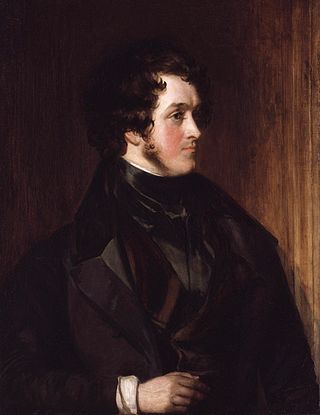
William Harrison Ainsworth was an English historical novelist born at King Street in Manchester. He trained as a lawyer, but the legal profession held no attraction for him. While completing his legal studies in London he met the publisher John Ebers, at that time manager of the King's Theatre, Haymarket. Ebers introduced Ainsworth to literary and dramatic circles, and to his daughter, who became Ainsworth's wife.
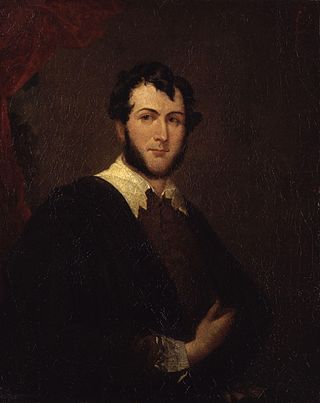
George Cruikshank or Cruickshank was a British caricaturist and book illustrator, praised as the "modern Hogarth" during his life. His book illustrations for his friend Charles Dickens, and many other authors, reached an international audience.

Oliver Twist is a 1948 British film and the second of David Lean's two film adaptations of Charles Dickens novels. Following his 1946 version of Great Expectations, Lean re-assembled much of the same team for his adaptation of Dickens' 1838 novel, including producers Ronald Neame and Anthony Havelock-Allan, cinematographer Guy Green, designer John Bryan and editor Jack Harris. Lean's then-wife, Kay Walsh, who had collaborated on the screenplay for Great Expectations, played the role of Nancy. John Howard Davies was cast as Oliver, while Alec Guinness portrayed Fagin and Robert Newton played Bill Sykes.

Nancy is a fictional character in the 1838 novel Oliver Twist by Charles Dickens and its several adaptations for theatre, television and films. She is a member of Fagin's gang and the lover, and eventual victim, of Bill Sikes.
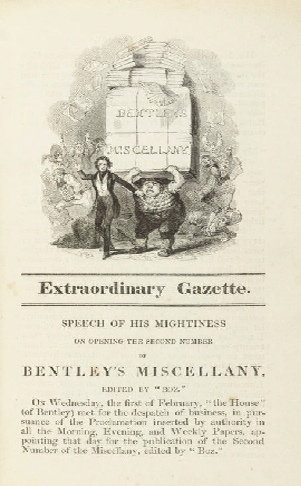
Bentley's Miscellany was an English literary magazine started by Richard Bentley. It was published between 1836 and 1868.

Fagin is a fictional character and the secondary antagonist in Charles Dickens's 1838 novel Oliver Twist. In the preface to the novel, he is described as a "receiver of stolen goods". He is the leader of a group of children whom he teaches to make their livings by pickpocketing and other criminal activities, in exchange for shelter. A distinguishing trait is his constant and insincere use of the phrase "my dear" when addressing others. At the time of the novel, he is said by another character, Monks, to have already made criminals out of "scores" of children. Nancy, who is the lover of Bill Sikes, is confirmed to be Fagin's former pupil.

The Mudfog Papers are an anthology of stories written by Charles Dickens and published from 1837 to 1838 in the monthly literary journal Bentley's Miscellany, which he was then editing.
Windsor Castle is a novel by William Harrison Ainsworth serially published in 1842. It is a historical romance with gothic elements that depicts Henry VIII's pursuit of Anne Boleyn. Intertwined with the story are the actions of Herne the Hunter, a legendary ghost that haunts Windsor woods.
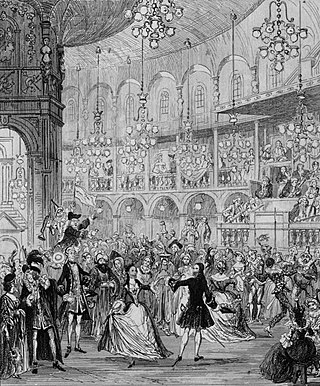
The Miser's Daughter is a novel by William Harrison Ainsworth serially published in 1842. It is a historical romance that describes a young man pursuing the daughter of a miserly rich man during the 18th century.

Jack Sheppard is a novel by William Harrison Ainsworth serially published in Bentley's Miscellany from 1839 to 1840, with illustrations by George Cruikshank. It is a historical romance and a Newgate novel based on the real life of the 18th-century criminal Jack Sheppard.
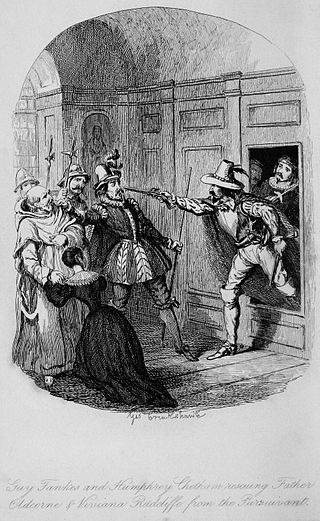
The novel Guy Fawkes first appeared as a serial in Bentley's Miscellany, between January and November 1840. It was subsequently published as a three-volume set in July 1841, with illustrations by George Cruikshank. The first of William Harrison Ainsworth's seven "Lancashire novels", the story is based on the Gunpowder Plot of 1605, an unsuccessful attempt to blow up the Houses of Parliament. Ainsworth relied heavily on historical documents describing the trial and execution of the conspirators, of whom Fawkes was one, but he also embellished the known facts. He invented the character of Viviana Radcliffe, daughter of the prominent Radcliffe family of Ordsall Hall – who becomes Fawkes's wife – and introduced gothic and supernatural elements into the story, such as the ability of the alchemist, John Dee, to raise the spirits of the dead.
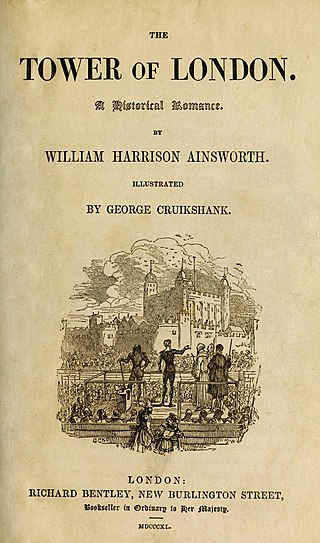
The Tower of London is a novel by William Harrison Ainsworth serially published in 1840. It is a historical romance that describes the history of Lady Jane Grey from her short-lived time as Queen of England to her execution.
St. James's is a novel by William Harrison Ainsworth serially published in 1844. It describes the events surrounding the end of Queen Anne's reign and the dispute between the Duke and Duchess of Marlborough with two Tories for influence over the queen.

Old St. Paul's, also titled Old Saint Paul's: A Tale of the Plague and the Fire, is a novel by William Harrison Ainsworth serially published in 1841. It is a historical romance that describes the events of the Great Plague of London and the Great Fire of London. It was the basis for the 1914 silent film Old St. Paul's.

Rookwood is a novel by William Harrison Ainsworth published in 1834. It is a historical and gothic romance that describes a dispute over the legitimate claim for the inheritance of Rookwood Place and the Rookwood family name.

Joseph Clayton Clark, who worked under the pseudonym "Kyd", was a British artist best known for his illustrations of characters from the novels of Charles Dickens. The artwork was published in magazines or sold as watercolor paintings, rather than included in an edition of the novels.

Dickensian is a British drama television series that premiered on BBC One from 26 December 2015 to 21 February 2016. The 20-part series, created and co-written by Tony Jordan, brings characters from many Charles Dickens novels together in one Victorian London neighbourhood, as Inspector Bucket investigates the murder of Ebenezer Scrooge's partner Jacob Marley.

Edward Stirling was an English stage manager, actor and dramatist. He published around 200 works for the stage, many being adaptations of works by popular authors, notably Charles Dickens, Walter Scott and Harrison Ainsworth, often within days of the novel's publication. He married Mary Anne Stirling (1815–1895), an actress who went on to a long and illustrious career as Mrs Stirling.
References
- Carver, Stephen. The Life and Works of the Lancashire Novelist William Harrison Ainsworth, 1805–1882. Lewiston: Edwin Mellen Press, 2003.
- Ellis, S. M. William Harrison Ainsworth and His Friends. 2 Vols. London: Garland Publishing, 1979.
- Patten, Robert. George Cruikshank's Life, Times, and Art Vol 2. Cambridge: Lutterworth Press, 1996.
- Thackeray, William Makepeace. "George Cruikshank", Westminster Review (June 1840).
- Worth, George. William Harrison Ainsworth. New York: Twayne Publishers, 1972.